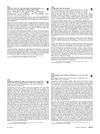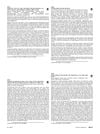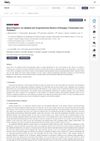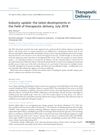Tapinarof Cream for Atopic Dermatitis: Pharmacokinetics, Systemic Exposure, and Preliminary Efficacy/Safety Results
June 2017
in “
Journal of The American Academy of Dermatology
”

TLDR Tapinarof cream at 1% concentration is effective and better tolerated for treating atopic dermatitis than the 2% concentration.
The document presents a study on the pharmacokinetics, systemic exposure, and preliminary efficacy/safety results of Tapinarof cream for the treatment of atopic dermatitis (AD). The study was an open-label, two-cohort, sequential study with 11 adult participants who had moderate-to-severe AD. They applied Tapinarof 1% or 2% cream twice daily for 21 days. The results showed that plasma exposure was generally greater with the 2% cream compared to the 1% cream, and there was no apparent accumulation of the drug after repeated application. However, three out of five participants in the 2% cohort experienced adverse events (AEs) such as headache, diarrhea, nausea, and vomiting, leading to treatment discontinuation after one application. No other significant safety issues were reported. Efficacy was comparable between the two concentrations, but the 1% cream showed better tolerability, with all remaining subjects achieving at least a 50% improvement in the Eczema Area and Severity Index (EASI) by Day 21. The study concluded that the 1% concentration of Tapinarof for AD corroborates the results of prior positive studies and was chosen for use in subsequent studies due to its better tolerability and comparable efficacy to the 2% concentration. However, the conclusions are limited by the open-label design and the small number of participants. The study was sponsored by GlaxoSmithKline.




